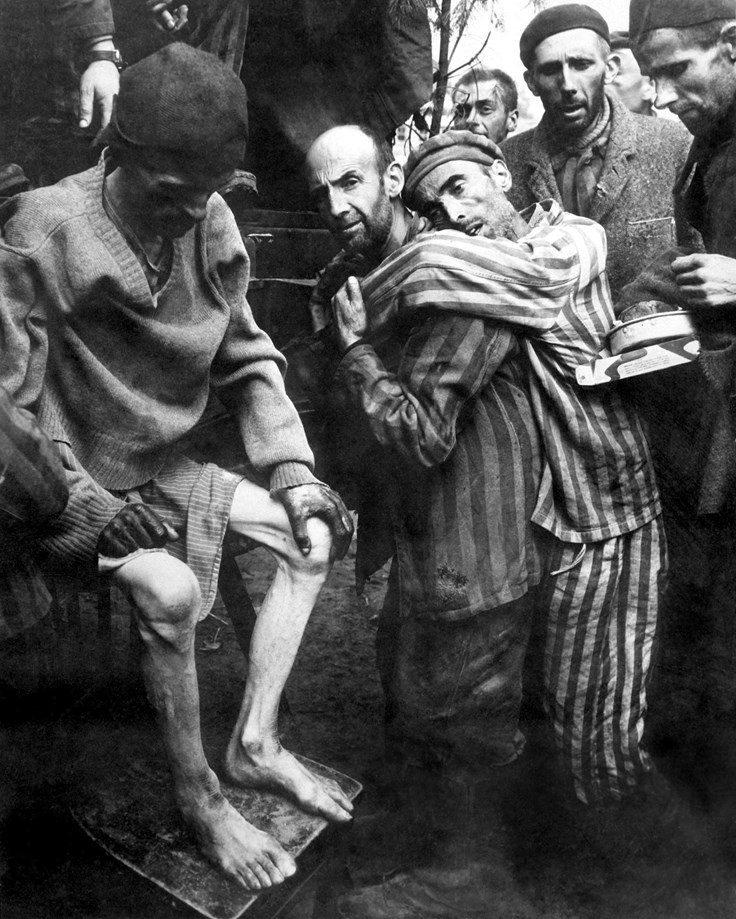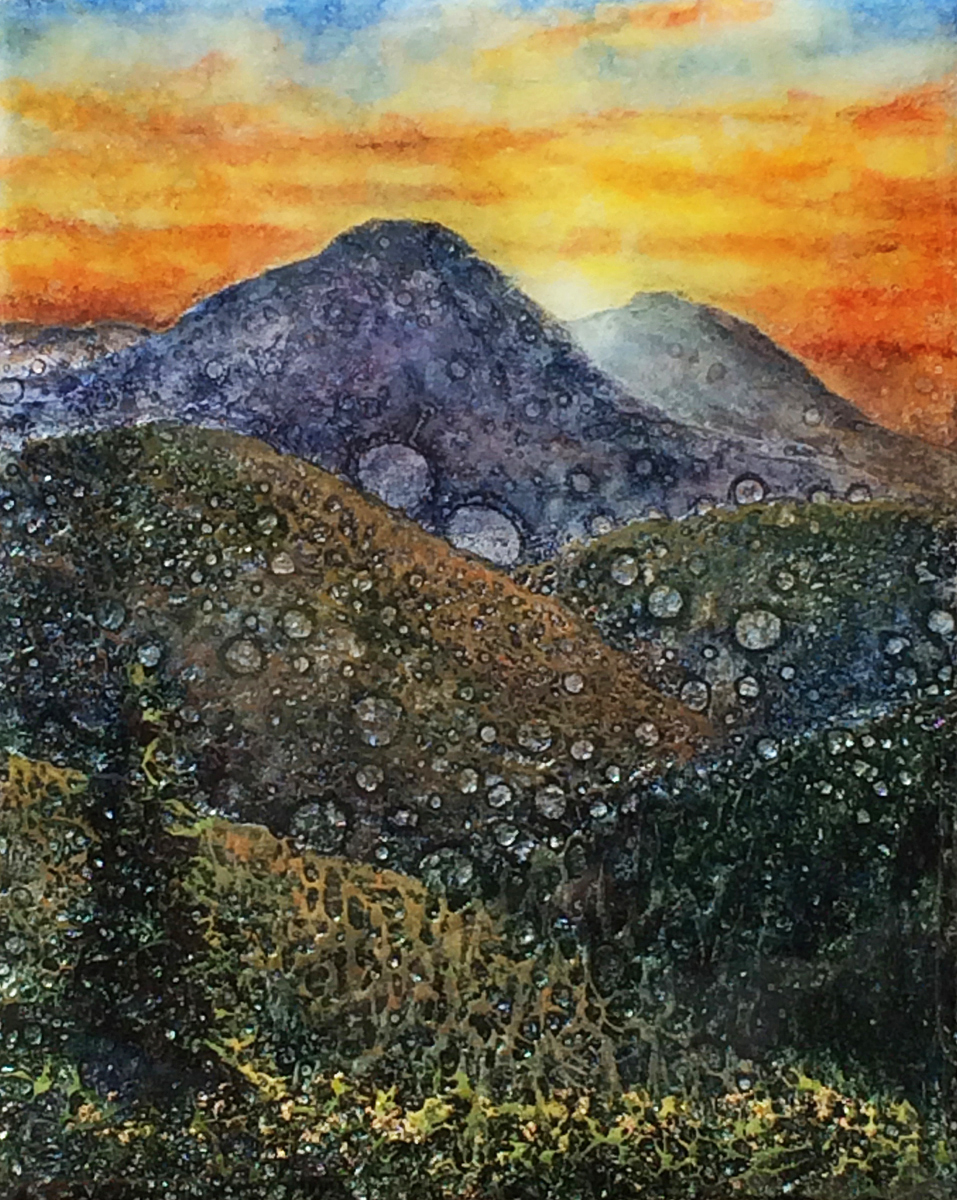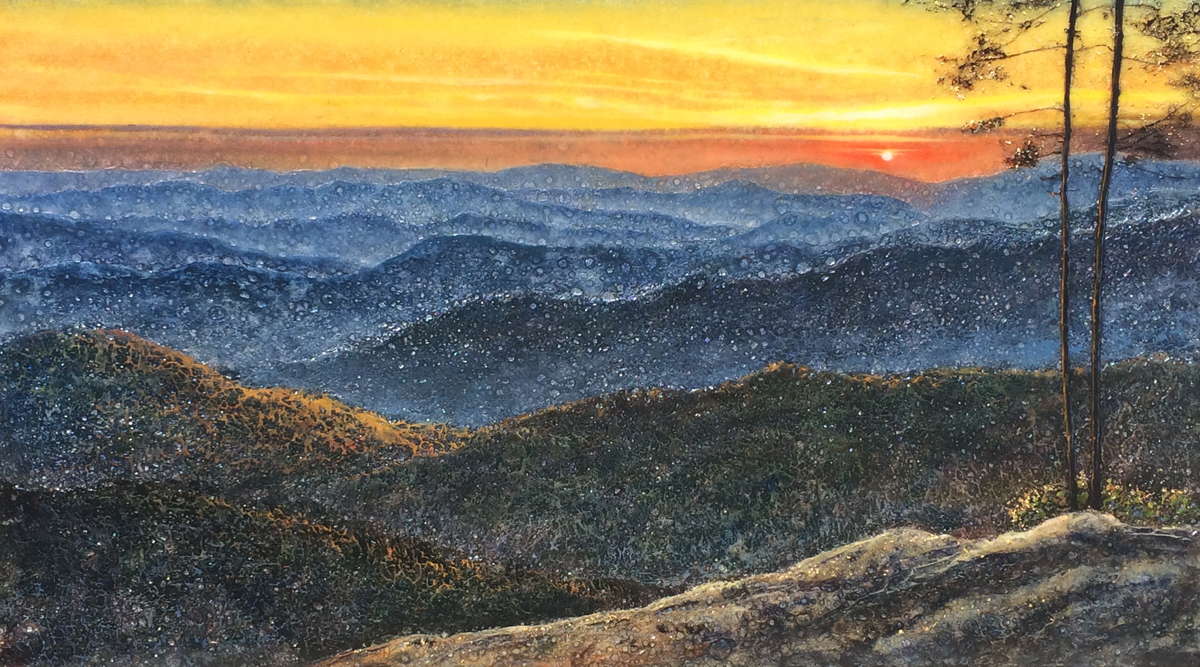Usually, when I write these blogs, I think in terms of "what do I write about today? What might be the slightest bit interesting for some visitor to read?" Today is different. I am writing because I feel like if I don't, I'll burst.
Yesterday, a gentleman visited my art studio here in Asheville and was really engaging with my paintings and my technique. This afternoon, he called me and asked if I would consider a commission, the theme of which would be the holocaust, and would that be okay or would it offend me.
I'm shaking right now actually. I have tried to use my skills as an artist to depict beauty and "sacred spaces" -- places (real or imagined) that just feel special, places where you would want to just sit a while and "drink it in" so to speak. I want to depict beauty and sacred spaces because I think that too often, I am confronted with ugliness and "profane spaces" in this world, and this is my way of at least doing something -- my own personal thing -- to balance things out. My purpose with art is to speak peace into an not-so-peaceful world. That's what I want to do. But to use my art to depict the deplorable, the unspeakable? How do I do that?
And yet...
Spanish artist Francisco Goya did that. He clearly depicted the deplorable. I would never hang his painting "Saturn devouring his Son" above the couch in my living room but it is an unspeakably powerful painting. It's his way of saying to the establishment -- "Hey, you are supposed to be protecting the people but instead, you are devouring them and you remind me of THIS!" -- a father devouring his son. Unspeakable, but powerful.
I have no idea if this commission will actually happen but it has affected me already. Can I just be really vulnerable and honest for a moment? See, I love the Jewish people and their history and their God. He has become my God and my faith tradition demands I love and respect these people. The holocaust is a personal affront and it all happened under the noses of people of my own faith tradition. They just let it happen. What do I do with that? I mourn. I mourn. I mourn.
So I think that, yes. I would be honored to use my art and depict horror...and hope. There is beauty in hope as well, right? I hope I get this assignment.
















